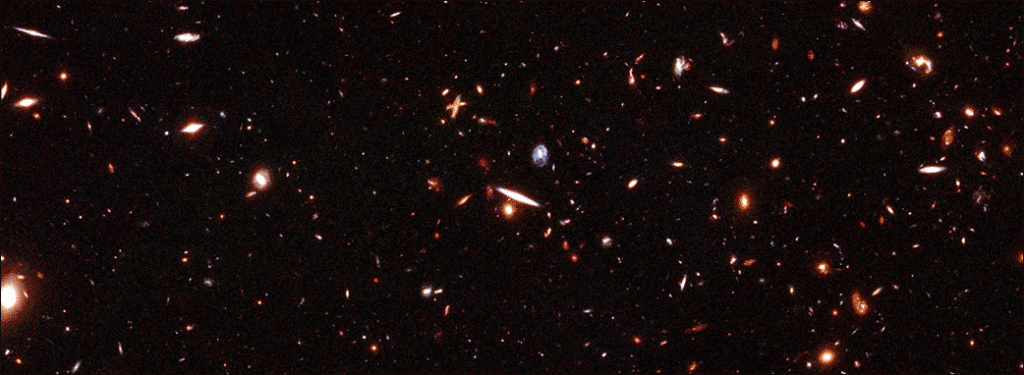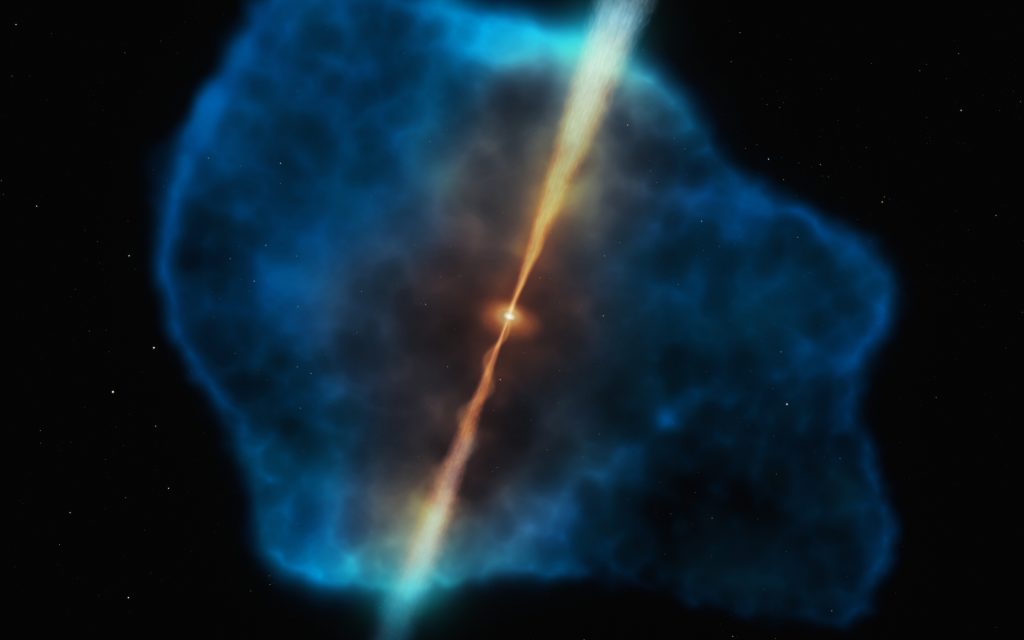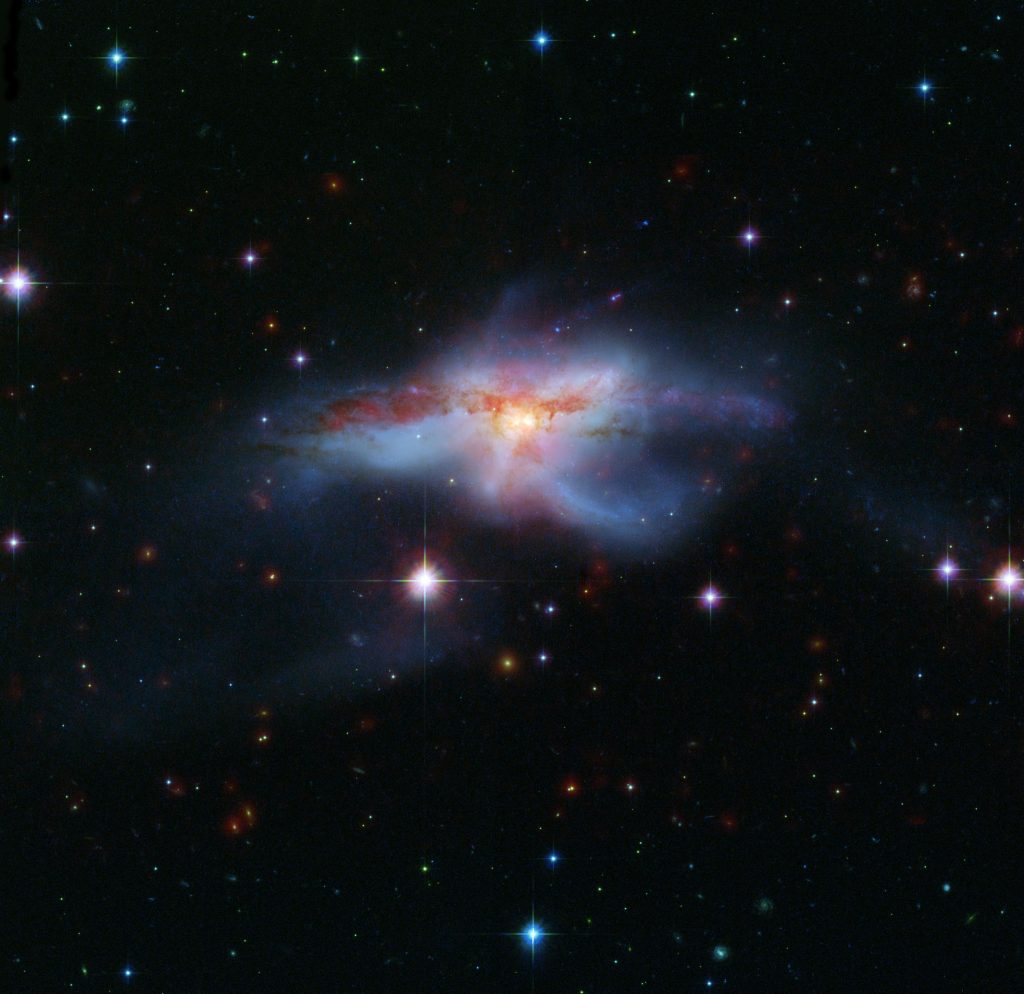Galaxy group from the epoch of reionization discovered
The universe has a 13.8 billion year long history behind it. Astronomers have already found lots of evidence to support the current model, but the more evidence there is for a theory, the better. To observe the formation of the universe, astronomers use actual time machines – their telescopes. The farther an object is away from us, the longer its light takes to reach us, and thus the farther back in time the light we are now seeing was created. An international research group has now succeeded in observing the most distant galaxy group to date. “EGS77” is a…







